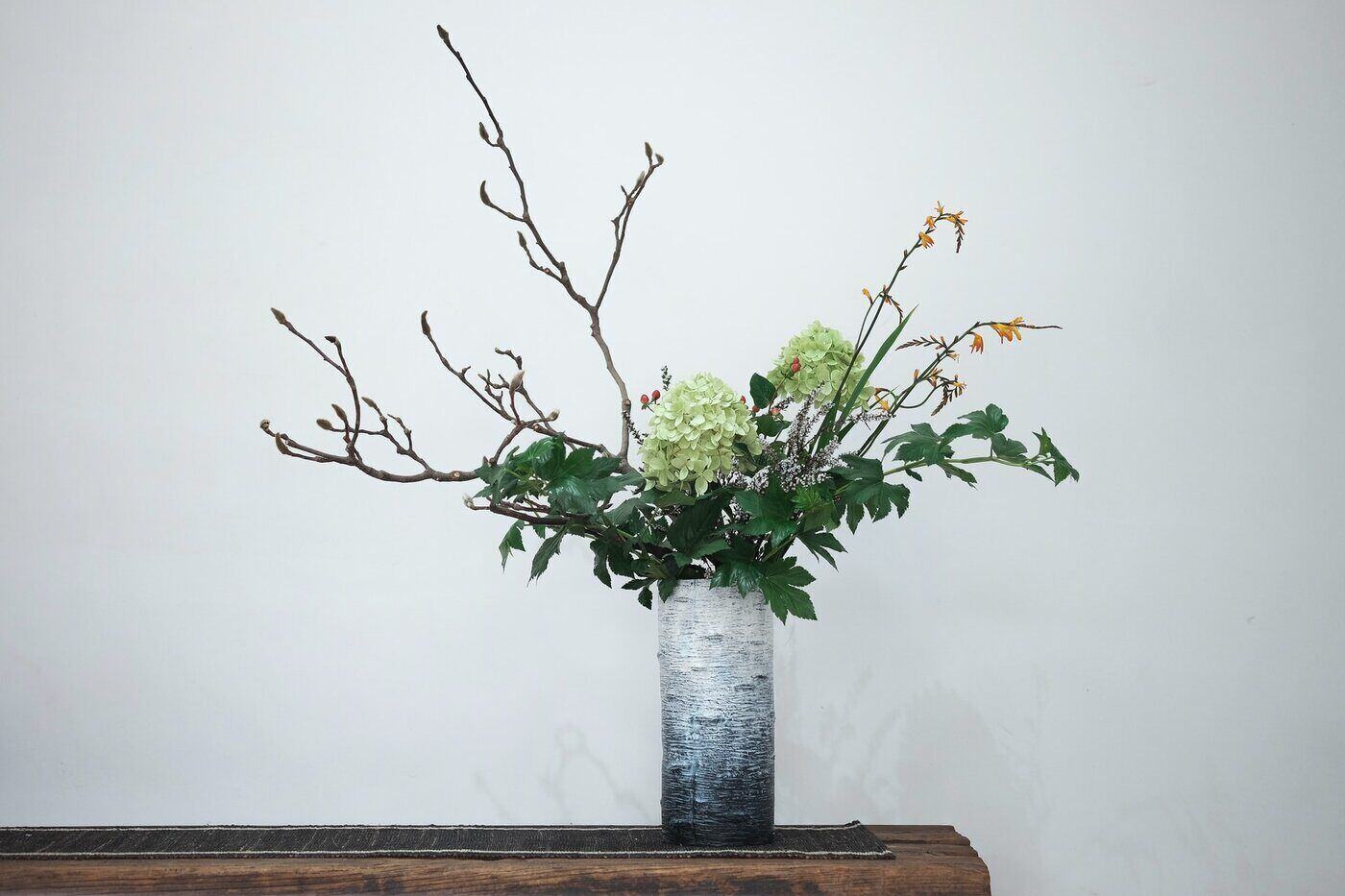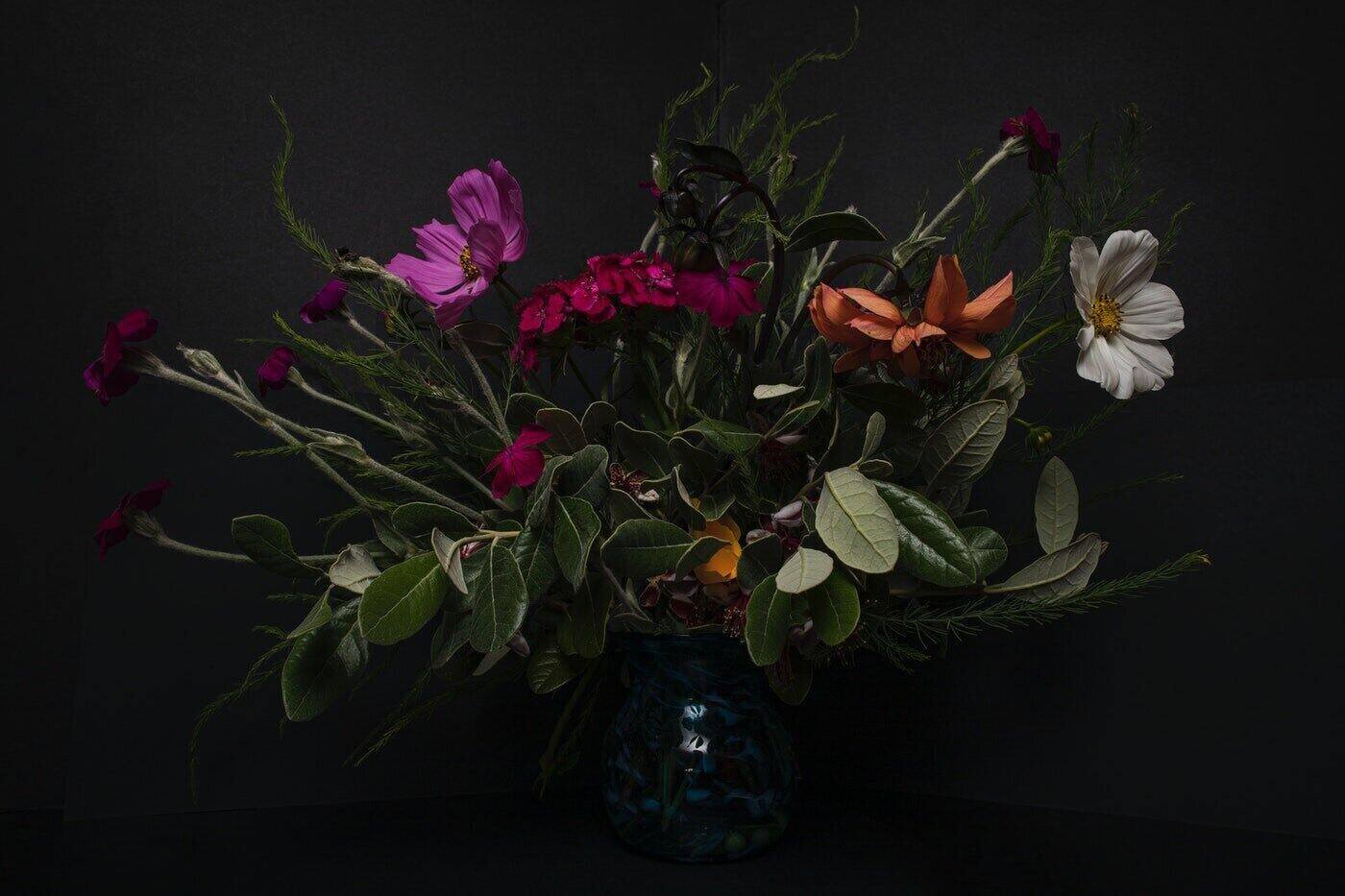The principles of floral design form a kind of guiding vision for the florist. Without them, you could have astonishingly beautiful flowers and your arrangement could still look like it fell off the back of a truck. Master them, however, and you’ll be able to create wonderful designs even if you totally freestyle them.
Elements of Floral Design
James Johnson of the Texas State Florist’s Association explains that the elements of design are:
- Line (which means the path the eye travels when it looks at something)
- Form (i.e., the shape of a flower and also the shape of the design)
- Space (both the space the flowers take up and the negative space around the flowers)
- Texture and Pattern
- Colour
- Size
- Fragrance
These, he says, are the basic “characteristics of the components” that make up an arrangement (i.e., flowers, leaves, etc.). The means a florist has of taking those components and turning them into floral art are called the principles of design.
Principles of Floral Design
Johnson states that the primary principles are:
- Proportion
- Balance
- Dominance
- Rhythm
- Harmony
- Unity
- Contrast
Different floristry schools and designers have slightly different lists (some people group two principles together, like harmony and unity, for example). They could have different ways of phrasing the items on the list, too (like when some people swap out a term like “dominance” for a term like “emphasis”).
Although these lists of principles might vary slightly, they’ll be focused on the same thing—being attentive to the ways the flowers relate to each other in an arrangement. Let’s go through the principles one by one.
Proportion
Proportion means the relationship of the parts to each other and to the whole. The Baxter County Master Gardeners state that florists should consider the “relative area or volume” each form takes up, as well as the number of each shape and colour of flower that’s included. Groupings of 3 or 5 tend to look more proportional and pleasing.
Some florists group “scale” under proportion. Scale reminds us that the size of the arrangement needs to be proportional to its setting. The larger the setting, the larger the design needs to be.
The arrangement as a whole also needs to be proportional to the container. The arrangement should be somewhere between one and a half to twice the size of the container.
Balance
Balance refers to whether an arrangement appears to be secure and stable. There’s a practical component to this, of course (few arrangements will be lovely if they topple off the table), which florists call physical balance.
There’s an aesthetic component to balance, too, which is called visual balance. A balanced arrangement is one that looks substantial without being top- or bottom-heavy, and without appearing lopsided. Balance can be formal (that is, symmetrical) or informal (i.e., asymmetrical).
Symmetrical balance will create an impression of rest. Asymmetrical balance will give your arrangements more of a natural feel.
For symmetrical balance, keep turning the arrangement as you work, making sure the material has the same visual weight on each side.
Dominance
When florists talk about dominance, they’re talking about focal points and accents. When arrangements lack a focal point, they can appear haphazard.
The focal point might be a single area. Alternatively, it might be more of a theme that runs throughout the design; white flowers set against dark greenery in a garland, for example.
To create a focal point, use a dominant colour, shape or texture that contrasts with the rest of the design. You could use a large flower for emphasis, or you might have a specific grouping that draws the eye.
Once you’ve decided what you want to dominate the design, make sure the rest of the elements work to support that focal point and don’t outshine it.
Rhythm
Johnson explains that much like a musical arrangement, a floral arrangement has a rhythm, albeit a visual one. When you follow the lines of the arrangement, resting your eyes on certain features and then carrying on, that’s the rhythm of the piece.
Florists create rhythm by repeating elements in a design (i.e., shapes, colours or flower types). They can also use transitions from one part of a design to another, such as when a gradation of colours or a gradual change in flower or leaf size leads the eye from a heavy centre to the airier edges of a design.
Harmony
Creating harmony is about blending elements together in a pleasing way. The flowers in your arrangement need to have a positive relationship with each other. That could mean that their lines complement each other, that the colours go well together or that they’re a thematic match (all spring flowers, for example).
Harmony has to do with setting, as well. A sleek, avant-garde design won’t blend in at a hospital bedside, just as cottage-garden flowers can look out of place at a very formal dinner. That said, harmony is often a matter of taste.
Unity
As you could probably guess, unity refers to the way the design all hangs together, creating a sense that every element is working as a team. Nothing should upstage your focal point, for example, but your focal point shouldn’t be so dominant that it overshadows the other elements.
The Baxter County Master Gardeners say that a unified design will express “congeniality, cooperation, and a spirit of working together.” They suggest that florists work to ensure that the material and the container are unified, as well, and that there’s a unity between the design and the purpose it’s going to serve.
Contrast
Contrast is a way to emphasize different elements of a design. It also creates variety. We typically think about contrast as a matter of colour, but you can create contrast through shapes, textures, lines, spacing and sizes, too.
High-contrast designs are more dramatic, while less contrast is more conservative. Contrast is something to be judicious about, because too little can create a boring arrangement, but too much can make your final product look like a court jester.
Conclusion
As you can imagine, there’s a lot more to the principles of floristry than this. We hope this gets you started, though, and gives you some aesthetic inspiration as you arrange your flowers, even if you’re just bringing in some backyard blooms for your kitchen table.
Feature image: 五玄土 ORIENTO; Image 1: Natasha Babenko

